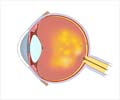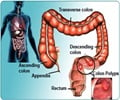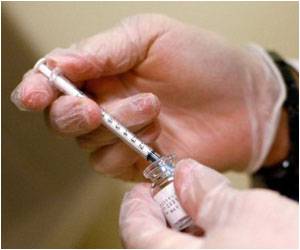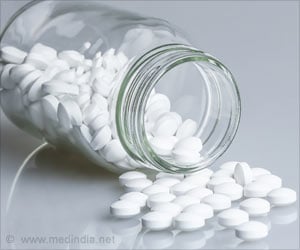Regular use of aspirin is associated with a higher risk of neovascular age-related macular degeneration (AMD), finds study published in JAMA Internal Medicine.

Gerald Liew, Ph.D., of the University of Sydney, Australia, and colleagues examined whether regular aspirin use (defined as once or more per week in the past year) was associated with a higher risk of developing AMD by conducting a prospective analysis of data from an Australian study that included four examinations during a 15-year period. Of 2,389 participants, 257 individuals (10.8 percent) were regular aspirin users.
After the 15-year follow-up, 63 individuals (24.5 percent) developed incident neovascular AMD, according to the results.
"The cumulative incidence of neovascular AMD among nonregular aspirin users was 0.8 percent at five years, 1.6 percent at 10 years, and 3.7 percent at 15 years; among regular aspirin users, the cumulative incidence was 1.9 percent at five years, 7 percent at 10 years and 9.3 percent at 15 years, respectively," the authors note. "Regular aspirin use was significantly associated with an increased incidence of neovascular AMD."
The authors note that any decision concerning whether to stop aspirin therapy is "complex and needs to be individualized."
"Currently, there is insufficient evidence to recommend changing clinical practice, except perhaps in patients with strong risk factors for neovascular AMD (e.g., existing late AMD in the fellow eye) in whom it may be appropriate to raise the potentially small risk of incident neovascular AMD with long-term aspirin therapy," the authors conclude. (JAMA Intern Med. Published online January 21, 2013. doi:10.1001/jamainternmed.2013.1583.)
Advertisement
Commentary: Relationship of Aspirin Use with Age-Related Macular Degeneration
Advertisement
"The key limitation is the nonrandomized design of the study with its potential for residual (unmeasured or unobserved) confounding that cannot be mitigated by multivariate logistic regression or propensity score analysis," the authors continue.
"From a purely science-of-medicine perspective, the strength of evidence is not sufficiently robust to be clinically directive. These findings are, at best, hypothesis-generating that should await validation in prospective randomized studies before guiding clinical practice or patient behavior," the authors conclude. "However, from an art-of-medicine perspective, based on the limited amount of available evidence, there are some courses of action available to the thoughtful clinician. In the absence of definitive evidence regarding whether limiting aspirin exposure mitigates AMD risk, one obvious course of action is to maintain the status quo."(JAMA Intern Med. Published online January 21, 2013. doi:10.1001/jamainternmed.2013.2530.)
Editor's Note: Please see the article for additional information, including other authors, author contributions and affiliations, financial disclosures, funding and support, etc.
Source-Eurekalert












